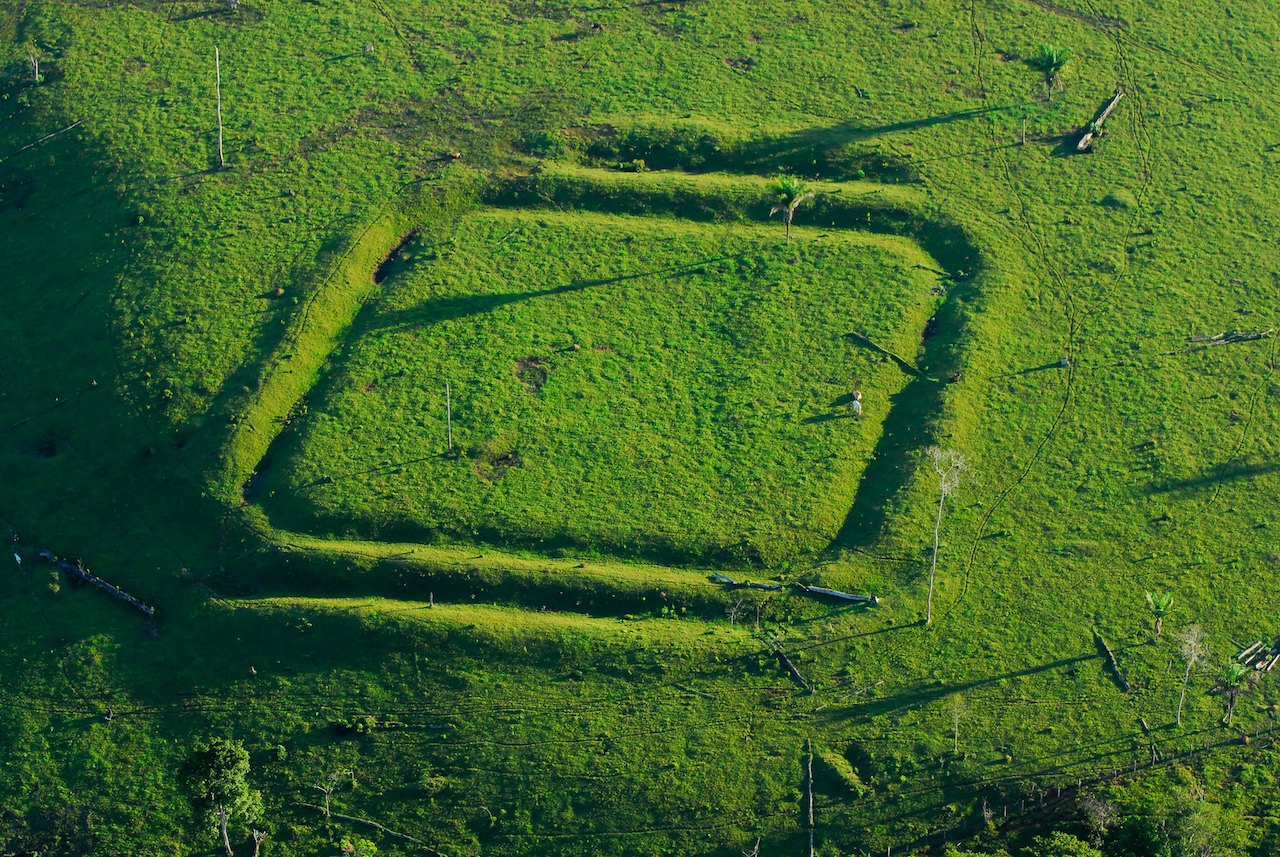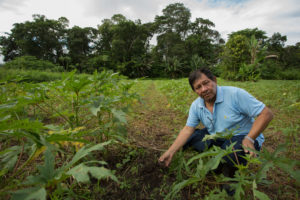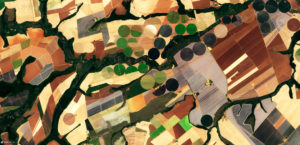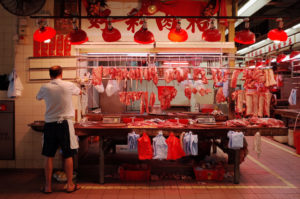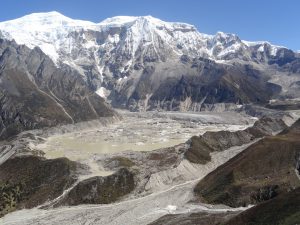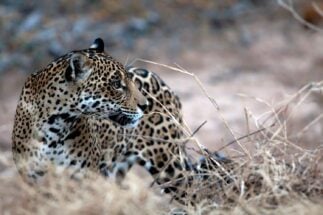For decades, researchers have been uncovering archaeological treasures that disprove any suggestion that complex civilizations did not exist in the Brazilian Amazon before colonialism. Perhaps the most fascinating are the more than 500 millenarian geoglyphs revealed in Acre state since the 1970s.
But even before scientists had learned about the civilizations behind these enormous geometric figures etched into the ground, some had been destroyed. In an incident earlier this month, a geoglyph hundreds of square metres in size and thousands of years old was razed to make way for grazing oxen and a corn plantation.
Employees at the Fazenda Crixá destroyed the geoglyph at the end of last year but the damage was only recently discovered during a routine analysis by palaeontologist Alceu Ranzi, who has researched the structures for 40 years.
“This is a historical monument of importance for all humanity,” said Ranzi, lamenting the geoglyph that he himself discovered in 2001 and called: “An open-air museum that in no way hinders the development of agribusiness in the region”.
The geoglyph at Fazenda Crixá, Capixaba municipality, was not the first to succumb to the machines and agricultural expansion that put Acre’s patrimony at risk.
A few years ago, two geoglyphs in the north-western state were lost to road-building: one to the BR-317, which opens up the Amazonian municipality of Boca do Acre; and the other to the BR-364 in the municipality of Brasileia, an important route for local agribusiness. In both cases, the geoglyphs were only discovered during the works.
The destruction of archaeological sites by public works is common in Amazonia. In Pará state, indigenous Munduruku fought for years to recover sacred urns unearthed during the construction of a hydroelectric dam.
The owner of Fazenda Crixá, Assuero Veronez, who is also president of the Acre Federation of Agriculture, said the destruction of the geoglyph was an accident.
“A couple of years ago I told them not to interfere in the ditch area,” he said, adding; “I am willing to mitigate the damage as much as possible.”
Veronez is now awaiting a visit by staff from the Institute of National Historical and Artistic Heritage (Iphan), who will assess the seriousness of the environmental crime and the damage to the site’s archaeological heritage. Ranzi’s complaint also mobilised the Federal Public Ministry and the Federal Police, who have opened an investigations into the case.
Geoglyphs in the Amazon: Humanity’s heritage
The archaeological site at Fazenda Crixá is among Acre’s prehistoric monuments to appear on the Indicative List of World Heritage sites that the Brazilian government presented to Unesco in 2015. In 2018, the 2,500-year-old geoglyph at the Jacó Sá archaeological site, 50 kilometres from Acre’s capital Rio Branco, became the first in the country to be listed as a cultural heritage site.
the Amazon is a constant target for exploiters and each time it becomes more difficult to monitor and control the damaging actions
Researchers know very little about the history of Acre’s geoglyphs, which, unlike those from Peru and England discovered over a century ago, are among the most recent to warrant archaeologists’ attention. These enormous figures drawn on the ground were only revealed at the end of the 20th century by increasing deforestation in the Amazon.
The lack of genetic material in their structures suggests that there were no villages there. Some studies argued that the structures were traces of civilizations that worshipped geometric gods, and perhaps set the stage for religious rituals.
Whatever their purpose, researchers agree that geoglyphs are essential for understanding the process of occupation and settlement in the Amazon region by ancient civilizations. They also offer clues as to whether the Amazon may have been a savannah thousands of years ago, when low vegetation enabled the ancient designs.
Growing agriculture
The governor of Acre, Gladson Cameli, entered office in 2019 promising to clear any obstacles to the growth of agribusiness in Acre. Following the example of neighbouring state Rondônia, the most deforested in the Amazon, Cameli advocated expanding soy and beef production.
However, Edivan Maciel, Acre’s production secretary said clearing new terrain wasn’t necessary: “We already have enough anthropised areas [land converted by humans] to increase production and make Acre a major export hub.”
The new project came after decades of a left-wing government that advocated an environmentally sustainable economy but that failed to bring economic and social development to the state, one of the poorest in Brazil.
This policy shift concerns Miguel Scarcello from non-governmental organisation SOS Amazônia. According to Scarcello, any large-scale economic activity related to land exploitation puts the Amazon at risk.
“Unfortunately, the Amazon is a constant target for exploiters and each time it becomes more difficult to monitor and control damaging actions,” Scarcello says.
One of the current administration’s most important projects is to create a special agricultural development zone in the region along the lines of Matopiba, a hub in the Cerrado savannah that has led to the destruction of half the biome’s native vegetation.
The area has been tentatively named Amacro, a combination of the states of Amazonas, Acre and Rondônia. The man behind the scheme is Fazenda Crixá owner Veronez. In a recent interview about the project with environmental news website O Eco, Veronez did not attempt to disguise the project’s potential to cause environmental destruction.
“Deforestation for us is synonymous with progress, as much as it can shock people,” he said. “Acre has no ore, no tourism potential, what it has are the best lands in Brazil. But this land has a problem, a forest on top.”
